Graves Yamaha Junior Cup R3: It's All for the Children
Well, they're not really children, but they are 14 to 25 and riding R3s in MotoAmerica's new Junior Cup
Lucky us/we/I got the invite up to Buttonwillow Raceway in California to get a look at what Chuck Graves and Yamaha have in store to conquer MotoAmerica’s new Junior Cup series, which replaces last season’s KTM 390 class. KTM s are still welcome, but now they’ll be duking it out with Kawasaki Ninja 300s and 400s, Honda CBR500Rs, Suzuki GSX250Rs – and nine teenagers receiving factory-ish support from Graves Motorsports.
Chuck Graves definitely knows his way around Yamahas; the names Graves and Yamaha have been inseparable in the US for at least 20 years now, and Yamaha Race Director Keith McCarty was also on hand at Buttonwillow to welcome Yamaha’s new crop of potential stars. Day 1 was an introduction to the Graves system of racing, Day 2 would be the riders’ first time on track with their new bikes.
Production class? Yes it is; no rare factory parts are available (and if they are, they’re not legal). However, as always, prepping a bike for a season of competition (if you want to win) does involve more than taking off the mirrors and lights. Quite a bit more in this case. Here’s everything that goes into a Graves R3.
A big part of the Graves package is learning to go about racing in a professional manner. That involves meticulous preparation and careful setup of suspension, the Suter slipper clutch, etc. – and all nine Graves R3 riders will be using interactive setup sheets to record every suspension adjustment: fork height, swingarm length, fork preload, fork clickers (all the way in is 0, first click out is 1), rear ride height, shock preload and damping adjusters, gearing… Make sure you write it all down!
You don’t have to change the clutch plates every race weekend, but Chuck would. Slipper clutches do wear them out faster. The R3’s design requires that you drain the coolant to get to the clutch. Follow the manual for bleeding it after you refill it. Check the oil. These engines, Chuck tells us, have run 7000 miles in endurance events without problems. Keep an eye on valve clearances, perform leakdown tests to ensure all is snug, you should be fine. If not, we have six engine crates that UPS can ship anywhere in three days…
The DID 415 drive chain looks like a gold necklace and consumes very little power; it should be replaced at 500 km. Be sure it’s properly tensioned and you shouldn’t have any issues. If you want to have somebody else work on your suspension, engine or ECU, feel free (FTECU handles the programming). But, well, the basic gist is, don’t come crying to Chuck if you wind up maladjusted. “We need to know where suspension starts and where it ends up. We don’t want to tune or advise you if you have other people work on your suspension.”
Here’s the Graves baseline and no doubt not a bad set of specs to crib from if you’re building your own R3 at home):
Graves Yamaha R3 Specifications | |
|---|---|
| Engine Type | 321cc liquid-cooled, DOHC inline twin-cylinder; 8 valves |
| Bore x Stroke | 68.0mm x 44.1mm |
| Compression Ratio | 11.4:1 |
| Fuel Delivery | Fuel Injection, FTECU Software with Graves Map |
| Ignition | Transistor Controlled Ignition with FTECU software |
| Speed Shifter | HM Moto America Spec RPM Limiter / Speed Shifter |
| Transmission | 6-speed; multiplate clutch |
| Final Drive | 415 Drive Chain from DID with Vortex Special Sprockets |
| Clutch | Suter Slipper Clutch |
| Suspension / Front | Graves Modified 41mm KYB telescopic fork; w/ Öhlins FKS203 inserts |
| Suspension / Rear | Graves Modified Öhlins YA 467 Shock |
| Brakes / Front | 298mm hydraulic disc |
| Brakes / Rear | 220mm hydraulic disc |
| Tires / Front | 110/70 ZR17 Dunlop Q3+ |
| Tires / Rear | 150/60 ZR17 Dunlop Q3+ |
| L x W x H | 82.3 in x 28.3 in x 44.7 in |
| Seat Height | 31.7 (OEM 30.7 in) |
| Wheelbase | 1399.8 mm / 55.1102 in |
| Rake | 26° |
| Trail | 105.2 mm / 4.14173 in |
| Max. Ground Clearance | 6.3 in |
| Fuel Capacity OEM | 3.7 gal |
| Fuel Economy OEM | 56 mpg |
| Wet 10 Liters Fuel | 316 (OEM 368 lb / 375 lb ABS model) |
2018 Graves Yamaha R3 DATA | |
| Power HP | 42 |
| Torque FT LBS | 21 |
| Trail [mm] | 105.2 mm / 4.14173 in |
| Offset [mm] | 35mm |
| Wheelbase [mm] | 1399.2. mm / 55.0866 in |
| Pivot height [mm] | 432.7 mm / 17.0354 in |
| Swing ang [deg] | -12.2deg |
| COG (x;y) [mm] | 676;677 |
| Swing length [mm] | 582.2 |
| Shock length [mm] | 287 |
| Linkage | R3 |
| Link ratio | 2.857 |
| Fork length | 775 |
| Front tire radius [mm] | 295 |
| Rear tire radius [mm] | 309.5 |
| Shock spring rate [N/mm] | 170 |
| Shock spring preload [mm] | 10 |
| Fork spring rate [N/mm] | 7 |
| Fork spring preload [mm] | 7 |
| Front sprocket teeth | 18 |
| Rear sprocket teeth | 56 |
| Squat angle [deg] | 31.5 |
| Load transfer angle [deg] | 25.82 |
Forty-two rear-wheel horsies compares favorably to the 35 MO got on our last R3 dyno pull. Will it be enough to run with modified KTMs? How are we going to ensure parity between all the bikes in the series, including the new Ninja 400 that’s also eligible? That’s the job of the Junior Cup-mandated HM Shifter Kit/ Rev Limiter. For now, the R3 and Ninja twin-cylinders are allowed to rev to 13,000 rpm, the RC390 single to 10,500. The Ninja 400 twin’s limit is yet to be determined – and all those numbers can be adjusted by MotoAmerica throughout the season to try to keep things even by simply plugging a computer into the HM unit.
As Close To Dead-Even Racing As Possible
MotoAmerica Junior Cup Announces Class Rules
Now it’s time to tune the rider. Another part of the Graves package is access to multi-time AMA Champ Josh Hayes, who says he’d prefer to be racing but is also excited about his new role as “Yamaha Factory Racing Ambassador and bLU cRU Rider Coach.” When Josh got his first ride as a guest on a WERA National bike, he shared with the kids, the crew chief told him this motorcycle may not be perfect, but it’s as close to perfect as we can get it this weekend. The goal is to have a motorcycle that doesn’t cause the rider to have to work around any issues. The goal is to have a bike that doesn’t hold the rider back in any way.
That’s what Graves is going for here. In a class where all the equipment should be equal, speed will be rider-dependent. Some riders will prove to be more equal than others. If you’ve ever raced at all, you know how many times you could’ve done better if something on your bike hadn’t (insert mechanical problem here). And if something does go wrong, the Graves 18-wheeler, packed with parts, will be easy to spot in the pits at every MotoAmerica round. (Cash is the preferred exchange medium.)
How do you improve the rider? Instead of having to pull into the pits and look at lap times, each bike gets a new AIM Solo2 onboard GPS monitor (just below the speedo here) with a bar graph on the left that lights up green when we’re going faster than the last lap, red when we’re not – and records all kinds of data that can be downloaded and looked at after the session.
Next on the agenda is the big Dunlop tire test/shakedown cruise at Barber Motorsports Park in Alabama, March 26 and 27. After that, the MotoAmerica lights go green at Road Atlanta April 13. May the best young man win.
More by John Burns



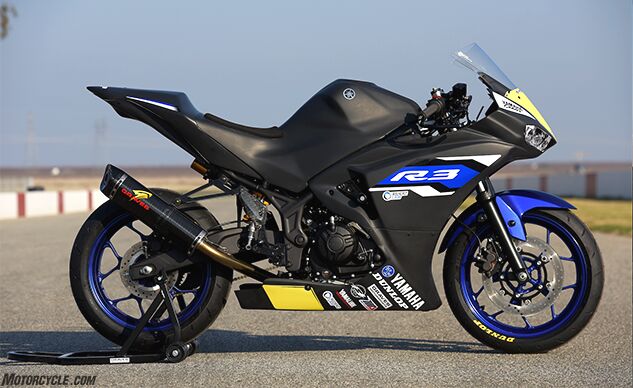
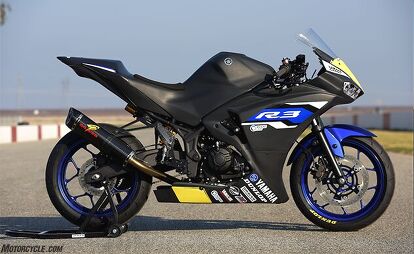


















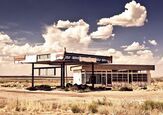
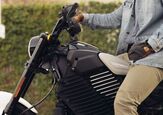
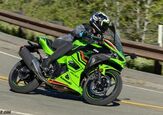
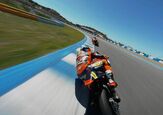

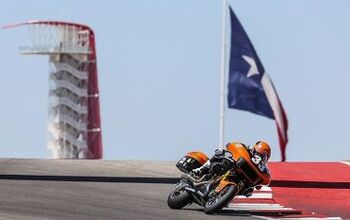
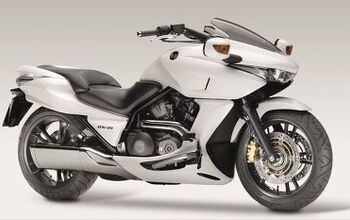
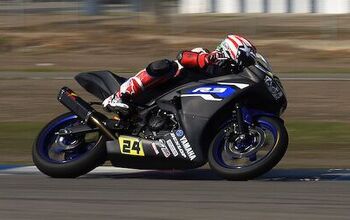
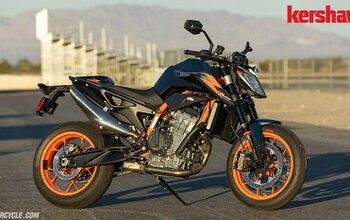
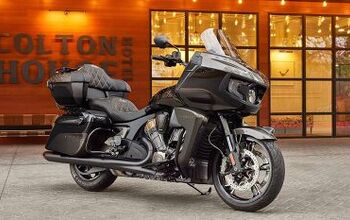
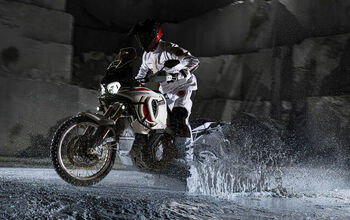

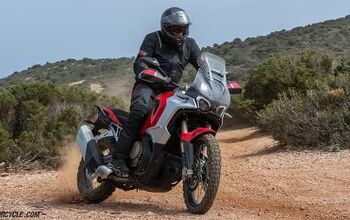

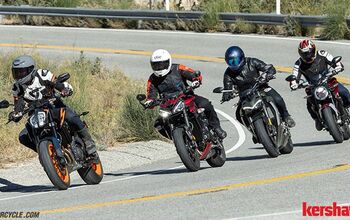

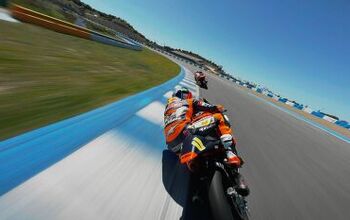
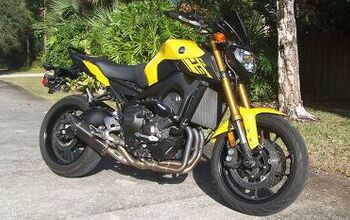

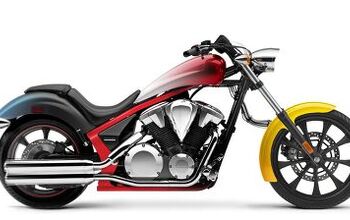
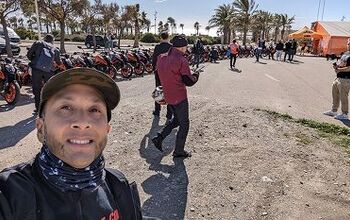
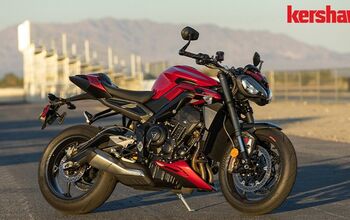
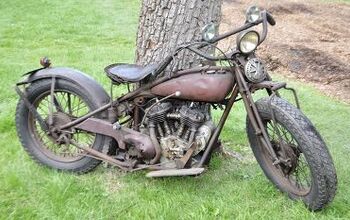
Comments
Join the conversation
It'll certainly be more fun to watch than Superbike
"…a bar graph on the left that lights up green when we’re going faster than the last lap, red when we’re not…"
OMG they just made a video game out of going fast!
Where do I put money down on the 14 year olds?